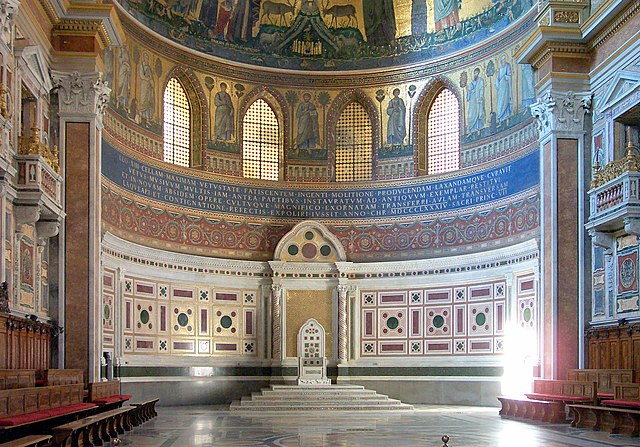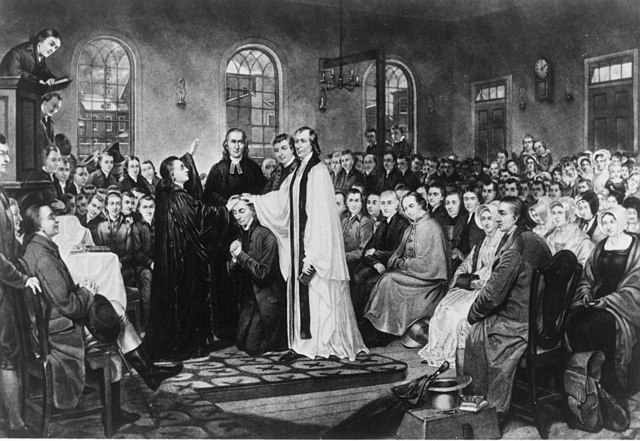An episcopal polity is a hierarchical form of church governance in which the chief local authorities are called bishops. The word "bishop" here is derived via the British Latin and Vulgar Latin term *ebiscopus/*biscopus, from the Ancient Greek ἐπίσκοπος epískopos meaning "overseer". It is the structure used by many of the major Christian Churches and denominations, such as the Catholic, Eastern Orthodox, Oriental Orthodox, Church of the East, Anglican, Lutheran and Methodist churches or denominations, and other churches founded independently from these lineages.
The chair (cathedra) of the Bishop of Rome (Pope) of the Catholic Church in the Archbasilica of St. John in Lateran in Rome, Italy, represents his episcopal authority.
The government of a bishop is typically symbolized by a cathedral church, such as the bishops's see at Chartres Cathedral.
Pope Pius IX convened the First Vatican Council that approved the dogma of the pope as the visible head of the church, prime bishop over a hierarchy of clergy and believers.
Paul Kwong, Anglican Archbishop and Primate of Hong Kong
Ecclesiastical polity is the government of a church. There are local (congregational) forms of organization as well as denominational. A church's polity may describe its ministerial offices or an authority structure between churches. Polity relates closely to ecclesiology, the theological study of the church.
The apostles Peter and John laying hands in ordination. Illustration, 1873.
An Anglican deacon, bishop and priest. Priests are usually former deacons in episcopal polity.
The ordination of Methodist Bishop Francis Asbury, 1784.
Cathedral churches like St. Andrews were incompatible with the presbyterian polity taught by John Knox. This statue stands in St. Giles, still called a cathedral despite no longer serving as an episcopal seat.








